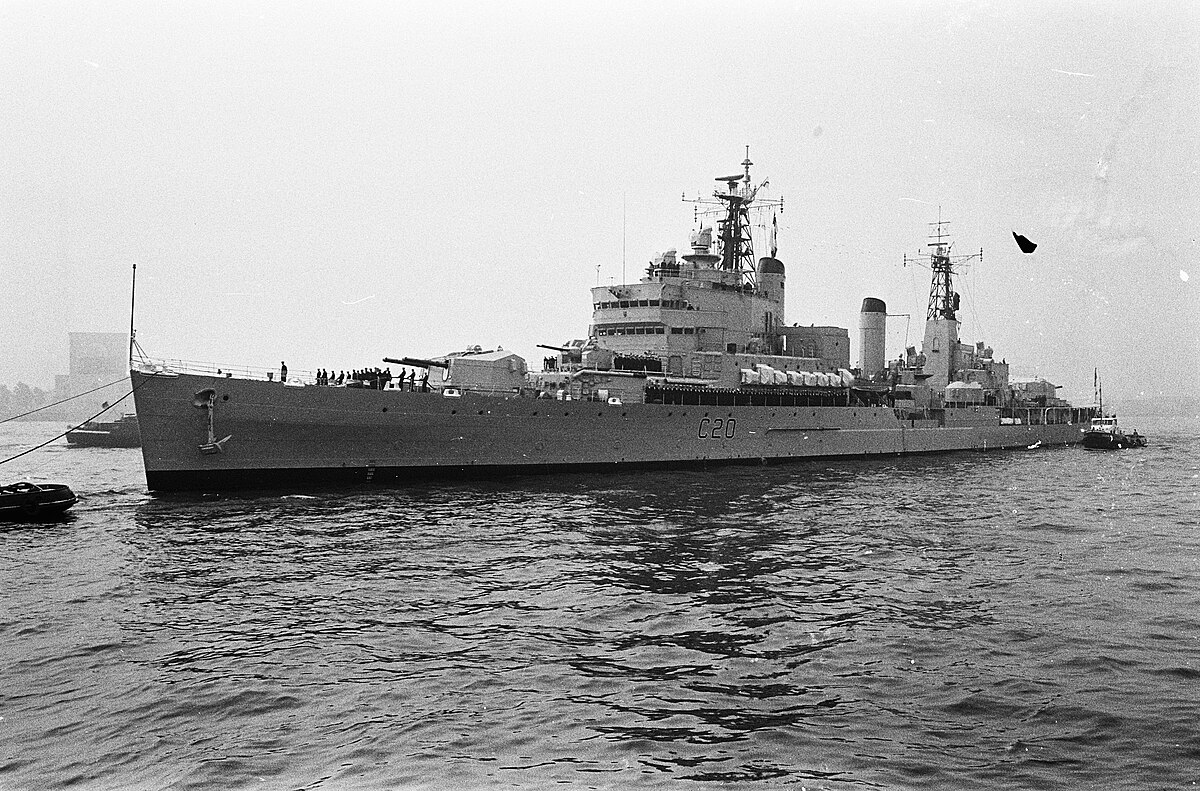I know he is not a naval historian, but Max Hastings in his most recent book Pedestal says that for all navies the light cruiser proved a disappointment, if not a waste, given that few of them ever really performed their intended roles and more often than not became victims to aerial and submarine attack.
It's hard to argue against this hypothesis given their war records. After the bulk buy of Fijis was there really any pressing need for more 6in cruisers to be built post-1942? I don't think that there was and the mind-boggling switching of names and slips and lack of resources makes you wonder why they bothered with the Tiger-class at all. They would have been better off building another batch of War Programme Didos or going for N2s instead. Neptune was a fine looking 12-gun 6in cruiser but realistically an anachronism even for 1944.
Now I'm not saying those resources should necessarily have been funneled into the Light Fleet Carriers - unless they could be built in 18-24 months flat it doesn't matter how much effort you put in they won't be ready in time (3 or even 5 Colossus in the BPF is chickenfeed compared to a US task force in 1945).
First up let’s get the programming right here.
The last of the Fijis were Bermuda and Newfoundland in the 1939 Programme and ordered 4 Sept 1939.
The next cruisers ordered, the original Minotaurs, were part of the 1941 and 1941 Supplementary Programmes.
1941 Programme (approved April 1941 and ordered May 1941)
Swiftsure
Bellerophon (completed eventually as Tiger)
Minotaur (completed as the Canadian manned Ontario)
1941 Supplementary Programme (approved 24 Nov 1941 and ordered 18 Dec 1941).
Defence (completed as Lion)
Superb
Tiger (never laid down and reordered as a unit of the Neptune class).
In late 1941 the RN was only in the early stages of designing the light fleet carrier that became the Colossus class in the 1942 Programme with the first 3 ships ordered in March 1942 before the design had been finalised. This is all before the big carrier battles of 1942. Radar and aircraft had not yet fully taken over the traditional cruiser roles of trade protection, scouting for the fleet, and fleet protection. A lot of old WW1 vintage ships remained in the fleet. And RN cruiser losses 1939-41 were heavy, especially amongst the more modern units and this continued into 1942. As time went on in WW2 their role changed. They became essential heavy AA escorts to the carrier groups. That was especially so given the generally light AA armament of British destroyers until the Battle class came along.
Completion dates were initially planned to be from late 1943 to early 1945
The USN certainly didn’t think the cruiser dead. Just look at the numbers of ships authorised in 1940 and later years that they continued to lay down into 1945.
So saying the cruiser was dead in 1941/42 is pure hindsight. That only becomes clear postwar.
The 1942 Programme initially included 7 Minotaurs. Only 3 were ordered and 5 were cancelled in Aug-Nov 1942, being replaced in the same yards with orders for Colossus class carriers. The two that remained were:-
Blake (ordered May 1942. Completed as Blake)
Hawke (Ordered Oct 1942 from Portsmouth DY, laid down July 1943, cancelled Oct 1945 without much work being done)
I’m really not sure just how much in the way of resources could have been freed up for use elsewhere due to competing interests in the yards they were built in.
For example work on Bellerophon, laid down Oct 1941, at John Brown was at a standstill for almost a year in 1942/43 because the labour in the yard was being prioritised on Vanguard, Indefatigable, Nairana and destroyers. At one point much of the material gathered for her was transferred down the Clyde for use in Defence at Scotts. That was why it took 4 years from laying down to launch. JB were not involved in the light carrier programme.
Compare the length of time the Fijis spent on the slips and contrast that with time for Bellerophon, Defence and Blake spent. They were clearly not a high priority.
There were several 8” & 6” cruiser designs 1940-43 but there were other higher priorities so none proceeded.
The N2 was intended for the 1944 Programme. The design wasn’t approved until July 1943. The plan was to lay 5 of them down from Dec 1943-Sept 1944 with all completed by Sept 1947. So continuing with them is no help at all in WW2 given predicted build times of 28-36 months. But a new First Sea Lord, Cunningham, wanted 6” cruisers not 5.25”, hence the Neptune class.
Ultimately the Didos were too small. Their ability to carry a heavy light AA armament and radar fit was limited and they were very cramped for the crew and short ranged when it came to fighting in the Far East. Postwar only Royalist received any kind of modernisation.

 en.m.wikipedia.org
en.m.wikipedia.org

 en.m.wikipedia.org
en.m.wikipedia.org
